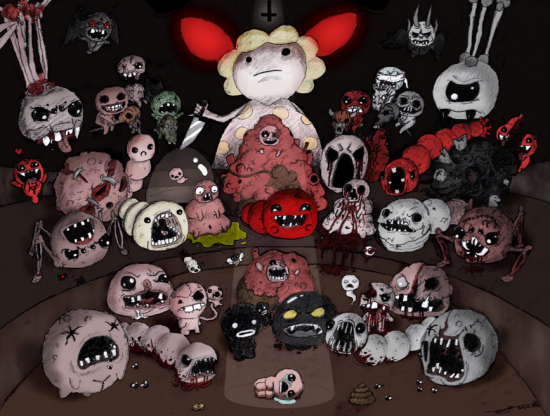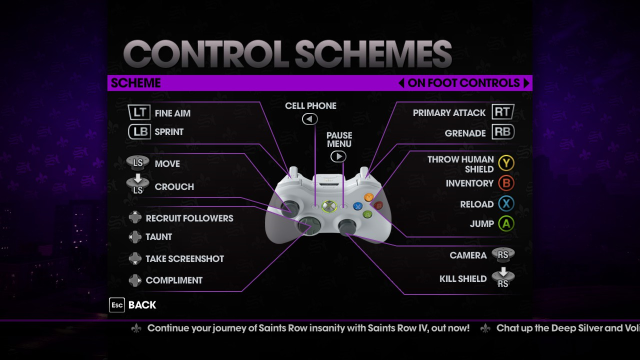

The PLAY 2014 event on PlayStation Network is winding down, and as the dust settles on this year’s festivities, Hohokum stands in a category all its own. Indeed, Honeyslug Games and artist Richard Hogg, with some help from Sony Santa Monica, have created a unique experience that takes another distinct step inline with products that aim to be less “game” and more “experimental digital playground.” With no shortage of personality, Hohokum adds a title to Sony’s digital stable that is definitely memorable, but is it actually any good? Read on to find out.
Hohokum is a 2D omnidirectional-scrolling collection of stimuli for the senses. And stimulate it will. with a color palette and visual direction unlike much else out today, players are in for a visual and aural treat with this one. To simply call it a game betrays the developers’ intentions of delivering something that is more of a journey that will take whatever form the player chooses. Players will take control of a magical one-eyed snake-thing named Long Mover and guide him in and out of various stages where primary and secondary goals can be met or not met at the player’s leisure.
Every world is open right from the beginning of the game so the usual tropes of opening up levels by completing tasks or being hindered from seeing the game due to potential failure at another task are removed. Long Mover, and by extension the player, simply exist in this world to put their own stamp on it. As Long Mover changes direction, so does his color, and so does the color on the Dual Shock 4 controller’s light bar. It’s a nice touch to add some connection to the player just sitting their in their meat space.
Those colors are there to delight the senses, calm the player, or just excite their feeling of wonder in order to keep them moving on. Players will meet new characters in each new environment they interact with. They will decide whether or not the changes they might make are going to be good ones, and worthy of their time. Do you help a bunch of wine servers fill glasses at a wedding party? Do you pollute one sea creature in order to get to another sea creature that a lost sailor longs to find? There aren’t right or wrong answers to be had, you simply do.
And therein lies the problems with Hohokum. For all of the pre-release talk from the developers about how this wasn’t a traditional game, and that they wanted to create an experience for players to just live in, Hohokum is tied to such unbelievably transparent game mechanics that nearly anyone who picks up the controller to give Hohokum a try is going to expect some sort of classical progression or motivation, and yet none will be given to them. It absolutely is a blasty-blast to control Long Mover through the various locations just to see what’s going on in these little micro-worlds, and how he can interact with them. But there is where the game betrays the designers. Letting players figure out what their interactions mean is a step towards the puzzle genre. Letting players further understand that completing some of these puzzles will actually trigger completions of both a primary goal and some secondary goals in each stage does nothing but fly in the face of the claim that this game wasn’t meant to be built on the usual gaming tropes, even though those mechanical conventions seem to be the very foundation upon which this game rests. Fine, traditional progression has been removed, but for some it will be at the expense of traditional motivation also.
Hohokum’s counter to that bold transparency of its gaming roots is that it tries to be as vague and as inaccessible as possible at first. The player is left on their own to figure out everything from the structure of the game, to how worlds are triggered and what the consequences of their actions will be. Movement is simple enough with buttons dedicated to just speed and direction. And Long Mover is generally a joy to control, gliding along at high speeds as a buffet of visual entrees cause your eyes to salivate at the colorfully whimsical design on display. However, not all the worlds offer equal satisfaction to a player following the notion of “just checking it all out.” It doesn’t take long for the player’s game instincts to kick in as they scan the scenery, attempting to put together what clues are available to help finish the tasks in this world or perhaps grab some information for a different one. Rapidly completing objectives because of the promise of what could be next is a fine motivation to advance. However, players rapidly flying through a level just to get the hell out of it because it’s boring or uninteresting can’t be considered a win.
And that’s the catch-22 at play here. Hohokum is the game that doesn’t want to be a game but is so clearly based on the concepts of games. And its resistance to be a game comes in the form of a presentation that isn’t going to be accessible to some, and motivations and themes that are so vague and non-specific they’d feel right at home in any modern art exhibit. And it should be noted that in the latter regard the game is successful. While playing, it wasn’t uncommon to be questioning the “whys” of Long Mover’s actions, or to see the connections between the worlds, and most importantly, the consequences of some of the actions. Seeing that some of those actions were bad, it was easy to say, “Well I’m just not going to do that again.” But also seeing that that action was tied to some sort of task progression led to questions of what was more important. If the game was truly an open playground then another solution should have been present. If not, then the player can simply stop the game, and be stuck there forever.
Unfortunately, the clash of these two mediums just seems like it wasn’t considered far enough beyond those initial conceptual claims, or given time to incubate into something that could function as a truly compelling experience that permeates the brain even after the controller is put down. That just didn’t happen here. Hohokum does just enough to earn your attention while you’re zipping Long Mover from place to place. Put him to rest, however, and so to go any additional thoughts on the game’s meaning or themes.
When games like BioShock Infinite and The Last of Us are also forcing the player to confront questions and issues they may have never dreamed of considering prior to playing the game, it just doesn’t seem like enough yet, or that games aren’t quite there yet in the grand history of the medium, or that it’s not fair, to rob the player of nearly all the context of their actions. On the other hand, recognition must be given to the developers for crafting a game that is truly a work of their vision. Hohokum doesn’t aim to check any specific marketing boxes. It just exists, exactly as it should be. Its beautifully rendered world is a sight to behold and is worth checking out. Whether or not it’s actually any fun for the player to dabble in this world of opposing forces, will be up to them to decide.
Hohokum is currently available for $14.99 as a cross-buy title for PS4, PS3 and the PS Vita. The PS4 version was mostly played for this review.
Follow Aaron on Twitter @fascistPLAGUE




 Titanfall: How to kill a Titan
Titanfall: How to kill a Titan Binding of Isaac: Rebirth Guide - How to Find the Secrets
Binding of Isaac: Rebirth Guide - How to Find the Secrets Switching From Console To PC Gaming: 8 Big Differences Explained
Switching From Console To PC Gaming: 8 Big Differences Explained Fallout 4: Memory Interrupted walkthrough
Fallout 4: Memory Interrupted walkthrough Top 10 Best FPS Games of 2010
Top 10 Best FPS Games of 2010